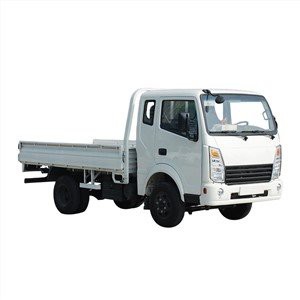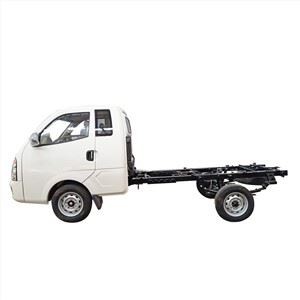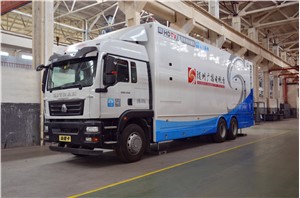How Many Gallons in a Truck Tanker?
Introduction
Truck tankers are essential for transporting various liquids, including fuel, chemicals, and food products. Understanding how many gallons these tankers can hold is crucial for logistics, shipping, and planning in industries reliant on liquid transport. This article delves deep into the capacities of truck tankers, the factors affecting their sizes, and some practical examples to better understand this vital aspect of transportation.
Types of Truck Tankers
1. Definitions and Overview
Truck tankers come in various forms and sizes, each serving specific purposes and industries. Here’s a look at some common types:
- Fuel Tankers: These tankers transport gasoline, diesel, and other petroleum products.
- Chemical Tankers: Designed to carry chemicals safely. They are often constructed from specific materials to avoid corrosion.
- Food Grade Tankers: Used for transporting food liquids, such as oils and juices, adhering to strict hygiene standards.
2. Capacity of Typical Tankers
The capacity of a tanker can vary significantly depending on its type and design. Generally, truck tankers fall into the following ranges:
| Type of Tanker | Typical Capacity (Gallons) |
|---|---|
| Fuel Tanker | 5,000 – 11,000 |
| Chemical Tanker | 4,000 – 14,000 |
| Food Grade Tanker | 5,000 – 8,000 |
| Tanker for Milk | 5,000 – 7,000 |

Factors Influencing Tanker Capacity
1. Regulations and Standards
Transport regulations affect tanker design and capacity. Different regions and countries have specific laws concerning liquid transport that dictate size limits based on road safety and environmental considerations.
2. Design and Construction
The materials used to construct a tanker can also influence its capacity. Steel, aluminum, and composite materials each come with specific weight and pressure limits, affecting how much liquid they can safely carry.
3. Tanker Configuration
Tankers come in different configurations, such as single-compartment and multi-compartment designs. Multi-compartment tankers can hold several types of liquids while single-compartment tankers are ideal for transporting one type of liquid.
Understanding Different Gallon Measurements
1. US Gallons vs. Imperial Gallons

It is essential to note that there is a difference between US gallons and Imperial gallons, which can affect the perception of a tanker’s capacity:
- US Gallon: Defines one gallon as 3.785 liters.
- Imperial Gallon: Defines one gallon as 4.546 liters.
2. Common Conversions
Here are some common conversions that might help in better understanding tanker measurements:
| Measurement | US Gallons | Imperial Gallons |
|---|---|---|
| 1 US Gallon | 1 | 0.83 |
| 1 Imperial Gallon | 1.2 | 1 |
Practical Examples of Tanker Usage
1. Fuel Transportation
A typical fuel tanker holds around 9,000 gallons of gasoline. This means one tanker can supply hundreds of vehicles with fuel, showcasing how integral these transport units are to everyday life.
2. Chemical Delivery
Consider a chemical manufacturing company requiring a delivery of sulfuric acid. A chemical tanker can move about 10,000 gallons of this product, reflecting how tankers cater to various industrial needs.
3. Food Industry Applications
A food-grade tanker transporting palm oil must adhere to strict hygiene protocols. Such tankers typically have a capacity of around 6,000 gallons, emphasizing their role in the food supply chain.
Technological Advances in Tanker Design
1. Enhanced Safety Features
Modern tankers are equipped with a variety of safety mechanisms, such as pressure gauges and emergency shut-off systems, that ensure the safe transport of hazardous materials. These features allow for higher capacity use while maintaining safety standards.
2. GPS and Tracking Technology
With the integration of GPS technology, fleet managers can monitor the tanker’s route, capacity, and estimated delivery time in real-time, improving efficiency and service quality.
Understanding Tanker Routes and Logistics
1. Route Planning
When planning routes for tankers, various factors, such as distance, road conditions, and delivery schedules, must be considered. Efficient route planning can save time and reduce fuel consumption.
2. Scheduling Deliveries
Logistics teams must synchronize tanker arrivals with customer needs. A well-scheduled delivery can ensure that products are received fresh and in optimal condition.
Environmental Considerations
1. Eco-Friendly Tankers
As industries strive to reduce their carbon footprint, the development of eco-friendly tankers that utilize lower-emission fuels is becoming more prevalent.
2. Waste Management
Transporting hazardous materials brings environmental responsibilities, including proper waste management and spill response systems that must be in place.
Cost Factors of Tanker Operations
1. Operational Costs
The cost of operating a tanker includes fuel, maintenance, insurance, and staff wages, which can vary significantly by region and type of cargo.
2. Pricing Models
Pricing for transportation services can depend on payload size, distance, and material type, affecting the overall logistics budget of companies.
Frequently Asked Questions (FAQ)

1. How many gallons can a typical fuel tanker hold?
A typical fuel tanker can hold between 5,000 and 11,000 gallons, depending on its design and specifications.
2. What is the difference between US gallons and Imperial gallons?
US gallons measure 3.785 liters, whereas Imperial gallons measure 4.546 liters. This conversion is vital when dealing with international shipments.
3. Can tankers transport multiple types of products?
Yes, multi-compartment tankers can transport different types of products, such as food liquids and chemicals, though each compartment must adhere to specific safety standards.
4. Are there regulations governing the size of tankers?
Yes, regional regulations dictate the maximum sizes and capacities of tankers to ensure safety and environmental compliance.
5. What factors affect the operational cost of a tanker?
Operational costs can include fuel prices, vehicle maintenance, insurance expenses, and the wages of personnel involved in managing the transport.
6. How has technology impacted tanker operations?
Technology has significantly improved tanker operations through enhanced safety features, real-time tracking, and more efficient route planning, resulting in better service delivery and reduced costs.
